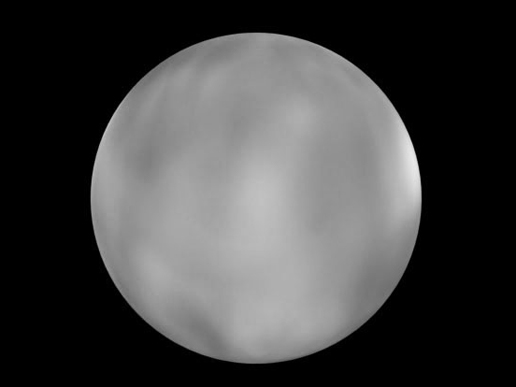Since several decades, the team led by Jacques Laskar at Paris Observatory has been improving long-term planetary ephemerides, aiming to obtain the best possible solution for the Earth’s orbit. This search is motivated by the possibility to calibrate the recent geological timescales by correlation of the geological stratigraphic data to the computed variation of the insolation on Earth resulting from the variation of the Earth orbit and orientation. The task is difficult because the chaotic behavior of the Solar System induces an exponential increase of the initial uncertainty of the solution which is multiplied by 10 every 10 Myr. A major achievement was obtained with the astronomical calibration of the Neogene period (0-23.03 Ma) to the La2004 orbital solution (Laskar et al., 2004). This timescale (Lourens et al, 2004) is now part of the latest geological timescale adopted by the International Union of Geological Sciences (IUGS). Since then, there has been a continuous effort to extend this astronomical calibration to the entire Cenozoic era, over about 65 Ma, at the time of the end of the dinosaurs. This international collaboration is organized in Europe through the GTSnext network and Earthtime-eu project and at at world level through the Earthtime project. A large world effort has been devoted to the obtention of new and accurate sedimentary records, while the improvement of the astronomical solution has mostly been concentrated in Paris Observatory. The latest improvement in the long-term astronomical solution has been obtained through a complete revision of the numerical algorithm and the construction of the high-precision short-term planetary ephemerides INPOP (Fienga et al., 2008, 2009, 2011) that were extended over 1 Myr as a reference for the long-term solutions. Despite this effort, this new solution La2010 is only valid over 50 Myr (Laskar et al., 2011). In a new study that is published as a Letter in A&A, the team has now identified the reasons of the unexpected difficulties that were encountered during the construction of these long-term solution for the planetary orbits. They studied in detail the orbit of Ceres and of some of the major asteroids, Pallas, Vesta, Iris, and Bamberga, and their interactions with the planetary orbits.

Ceres and Vesta were until now considered as relatively regular asteroids, but these previous computations neglected their mutual interactions. When taking into account the gravitational interactions among the asteroids, Jacques Laskar and his collaborators found that the motions of Ceres and Vesta are in fact highly chaotic. As a result, Even if the initial uncertainty on the present position of these small bodies is only 15 m (much less than what we can achieve now), their position will be totally lost in less than 400 kyr (Fig1). These minor bodies are much smaller than the planets : Ceres and Vesta are respectively 6000 and 22000 times less massive than the Earth. Nevertheless, they exert some perturbations on the planetary orbits, which are themselves chaotic, but on a longer time scale. Due to these interactions, the eccentricity of the Earth becomes unpredictable after 60 Myr, somewhat less than the duration of the Cenozoic era.

As the NASA/Dawn spacecraft is approaching Vesta, and will be orbiting this minor planet for several months before continuing its route towards Ceres, one can expect that the precision on the positions of these minor bodies will be improved. But this will be of no use for paleoclimate studies. Indeed, Even if the initial error error on these positions is reduced to only 1.5 mm, their positions will still be in total error after less than 500 kyr, and there will be no change in the time of validity of the orbital solution of the Earth. This limit of 60 Myr thus appears as an absolute limit for a precise prediction of the Earth’s eccentricity, that will not be beaten easily in the future. Despite their small size, Ceres and Vesta thus appear as the main limiting factor for the elaboration of a precise solution of the Earth’s orbit. A&A press release Strong chaos induced by close encounters with Ceres and Vesta J. Laskar, M. Gastineau, J.-B. Delisle, A. Farrés, A. Fienga A&A, 2011, 532, L4 La2010 : A new orbital solution for the long-term motion of the Earth J. Laskar, A. Fienga, M. Gastineau, H. Manche A&A, in press, DOI : 10.1051/0004-6361/201116836
